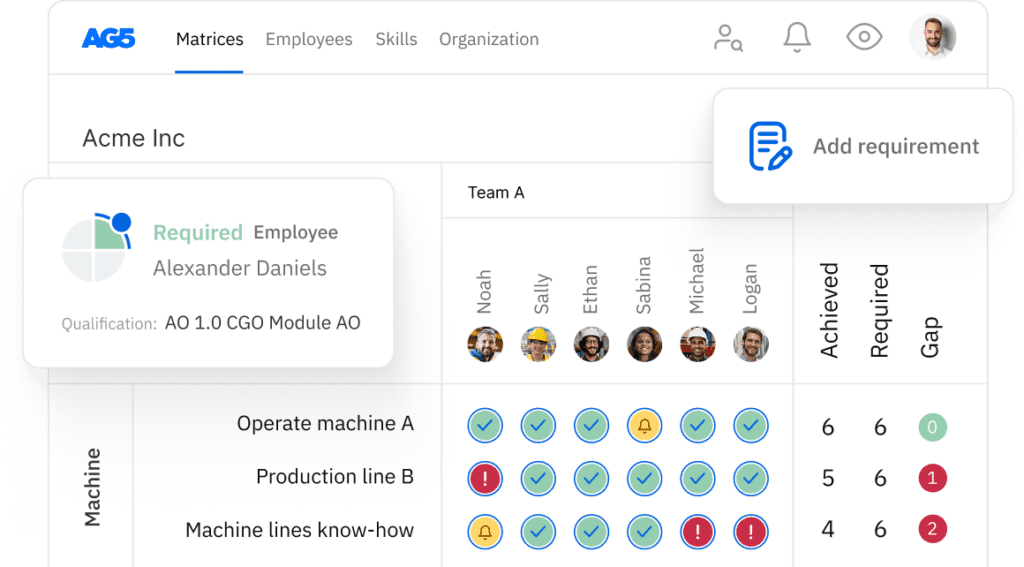ISO 14083: Greenhouse gases
ISO 14083 is part of the ISO 14000 series of environmental management standards developed by the International Organization for Standardization (ISO). In this guide, we will explore the key aspects of ISO 14083, including its significance, steps to implement the standard, benefits of implementation, and more.

What is ISO 14083? Copied
ISO 14083 is a set of environmental standards for quantifying and reporting greenhouse gas (GHG) emissions from transport chain operations on land, air, and water. These include:
- Roads
- Railways
- Cross-docking sites
- Airports
- Seaports
- Distribution centers
Specifically, ISO 14083 tells organizations how to find data to use to calculate GHGs.
How to get an ISO 14083 certification Copied
ISO 14083 is not a certification. It is a set of guidelines for calculating and reporting GHG emissions arising from passenger or freight transport. As such, it is primarily used by organizations or individuals involved in logistics. Organizations may choose to adopt and implement ISO 14083 if they want or need to calculate their transport emissions.
Renewal requirement Copied
As ISO 14083 is a guideline for calculating and reporting transport emissions, there are no specific renewal requirements for ISO 14083 itself. However, if an organization has obtained ISO 14001 certification, which focuses on environmental management systems, the certification typically needs to be renewed every three years.
The benefits of ISO 14083 implementation Copied
Implementing ISO 14083 offers several benefits to organizations. Some key advantages include the following:
Consistent measurement
ISO 14083 establishes a consistent framework for calculating transport emissions, ensuring standardized methodologies. This consistency facilitates accurate assessments of environmental impact and supports uniform reporting practices, promoting transparency and reliable data for organizations.
Regulatory alignment
Adhering to ISO 14083 helps organizations align with environmental regulations, enhancing regulatory compliance. Many regulatory frameworks reference ISO standards, enabling businesses to navigate legal requirements efficiently and demonstrating a commitment to environmental responsibility.
Performance improvement
Systematic calculation of transport emissions under ISO 14083 allows organizations to identify areas for improvement. By monitoring and reducing their environmental impact, businesses can enhance overall environmental performance, meet stakeholder expectations, and contribute to sustainable practices in line with societal values.
Challenges in implementing ISO 14083 Copied
Below are several of the challenges organizations commonly face when implementing ISO 14083.
Complexity and data availability
Implementing ISO 14083 can be challenging due to the complexity of calculating transport emissions accurately. Access to comprehensive and reliable data, including fuel consumption and travel distances, may be limited, posing hurdles for organizations striving to meet the standard’s requirements
Resource and expertise constraints
Smaller organizations may face resource constraints, both in terms of financial investment and skilled personnel, when implementing ISO 14083. The need for specialized expertise in emission calculations and environmental management can be a barrier for some businesses.
Changing regulations and standards
The dynamic nature of environmental regulations and standards poses a challenge. Organizations implementing ISO 14083 may struggle to keep up with evolving requirements, leading to potential compliance issues. Frequent updates and changes in calculation methodologies may necessitate continuous adaptation and training efforts.
Tips and strategies for preparing for implementing ISO 14083 Copied
Here are a few tips for preparing for the implementation of ISO 14083:
- Conduct a thorough assessment of available data sources for transport emissions. Ensure accurate and comprehensive information on fuel consumption, travel distances, and other relevant factors.
- Provide training to personnel involved in emissions calculations. Build awareness of ISO 14083 requirements and the importance of accurate data collection for successful implementation.
- Involve key stakeholders, including suppliers and transport partners, in the implementation process. Foster collaboration to enhance data accuracy, address challenges, and ensure a comprehensive approach to emissions calculations.
- Explore and invest in technology solutions that streamline data collection and calculation processes. Automation tools can improve efficiency, reduce errors, and enhance the overall effectiveness of ISO 14083 implementation.
- Establish a system for continuous monitoring and improvement. Regularly review processes, update calculations based on changing factors, and stay informed about advancements in emission measurement technologies and methodologies.
Resources for ISO 14083 Copied
For more information and guidance on ISO 14083, you can refer to the following resources:
International Organization for Standardization (ISO). The ISO 14083 page on the official ISO website provides the ISO 14083 standard document, news updates, and additional resources.
Industry associations. Industry associations, such as those related to sustainability, environmental management, or specific sectors, may provide resources, guidance, and networking opportunities related to ISO 14083. Reputable associations in this area include the Institute of Environmental Management and Assessment (IEMA) and the Environmental and Energy Study Institute (EESI).
Skills management for ISO 14083 Copied
AG5 stores all certifications in the cloud, providing all authorized personnel with access to the right version of approved certifications. This helps you easily keep track of all data and documentation related to implementing ISO 14083 across your organization.
Using AG5’s skills management software, you can monitor the status of any type of certification that is relevant to your workforce, leveraging intuitive dashboards that provide you with a clear understanding of exactly what is needed to keep your employees skilled and safe.
Frequently asked questions about ISO 14083 Copied
-
What is the scope of ISO 14083?
-
Is implementing ISO 14083 mandatory?
-
How long does it take to implement ISO 14083?
-
What are the cost considerations for ISO 14083 implementation?
-
What is the validity period of ISO 14083?
-
Can ISO 14083 be integrated with other management systems?
-
How can you learn more about ISO 14083?
Sources Copied
- ISO 14083. International Organization for Standardization (ISO)
Author Copied
Revisions Copied
Tired of managing skills in Excel?
Say goodbye to Excel matrices. Start using AG5’s plug and play skill matrix software.
Recognized by G2 for Excellence in Skills Management

